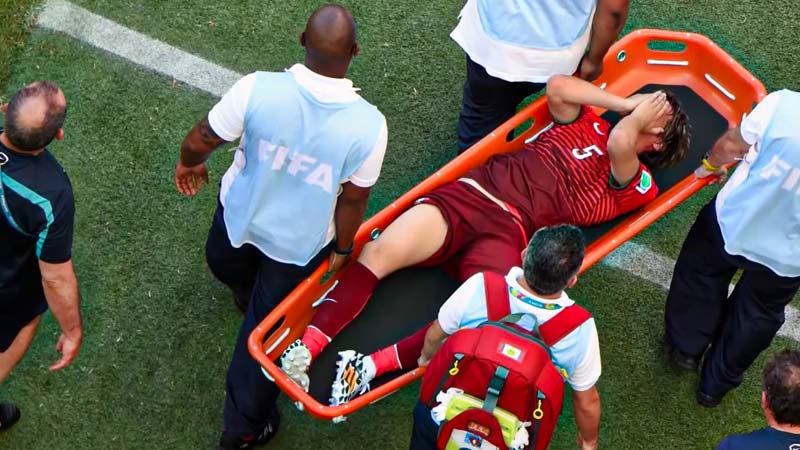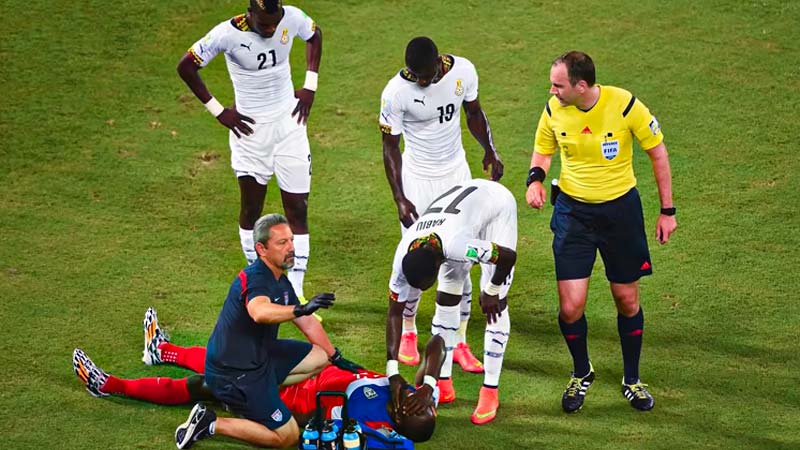Stoppage Time is not Extra Time.
Even though 50% of the world population loves football, ask them individually, and only a few can tell the difference between Soccer Stoppage and Extra time.
But it’s important to learn the basic difference between the two terms and how they fit in soccer – for your convenience. Let’s take a deep roll into what soccer stoppage time is and what the soccer stoppage time rules are.
What Is Stoppage Time In Soccer?
“In soccer, it ain’t over till it’s over. Stoppage time is where the magic happens.” – Thierry Henry
Unlike soccer extra time, stoppage time comes after each halftime break. It is also known as injury time or added time.
Soccer officials offer stoppage time at the end of each half of a match to cover the time lost due to interruptions during regular play.
In soccer, it is very usual to have little pauses that include substitutions, injuries, time-wasting, and other interruptions. It can temporarily pause the flow of the game.
To compensate for the loss, the referee decides how much time to add in a stoppage time. After both regulation halves of 45 minutes, players get an additional few minutes to play.
How Much Stoppage Time Is Allowed?
At the end of each half, the fourth official lifts up an electronic board. It shows the number of minutes teams have as stoppage time. Usually, injury or stoppage time adds up to one minute, but there is no upper limit.
In addition to injury or regular interruptions, stoppage time can also result in a technical error.
Back in September 2019, during a Carabao Cup between Burton Albion and Bournemouth, there was a drastic electrical failure.
The floodlights went out and it took more than 24 minutes to fix. Thus, the 90-minute soccer match took 28 minutes and was put down in history with the longest stoppage time.
Soccer Stoppage Time Rules

“Soccer’s stoppage time is the ultimate test of mental and physical resilience, where champions find a way and the ordinary fall.” – Arsène Wenger
Your legs can tire after 45 minutes of play. But hold on a little bit longer to play the stoppage time!
Extra times follow the same rules as any regulation soccer match. But things don’t go the same for stoppage times. We will get into the difference in detail. But now, let’s focus on Soccer Stoppage Time Rules.
- Stoppage times generally last for one to six minutes of additional time. However, there is no upper or lower time limit set for soccer stoppage time.
- Stoppage time is added to both halves of the match, typically at the end of the regulation 45 minutes. The duration of stoppage time can vary from match to match.
- Substitution can consume a significant amount of time, especially when it’s about multiple substitutions.
According to Law 3 of the Laws of the Game in the (3) Substitution Procedure section, a player can only be substituted during a stoppage in play and with the permission of the referee.
- Injured players and essential time to provide them with the medical attention they need, also add up to the stoppage time. Let’s not forget how bad the leg injury was for David Buss that ended his career.
Medical attention will take as much time as the officials need to offer help. This can add up to 2-15 minutes.
- Penalties and red cards were also added to the Stoppage time. According to the latest soccer stoppage time rule in the Premier League for 2023-24.
The referee counts the moment from the moment of offense to (1) blowing the whistle for the penalty pause and (2) when the player leaves the field for the Red Card. Raphael Varane became the first footballer to talk out loud about the new regulations.
- The referee has the authority to decide when to end the match, even if the announced stoppage time has not been fully played.
This is because he is in charge of carefully observing the ongoing play and noticing any additional delays that may have occurred.
- Goals scored during stoppage time are considered valid and count toward the final score. Believe it or not! There were 432 stoppage-time goals scored in the Premier League between 2016-17 and 2020-21.
When a team scores during stoppage time, the additional minutes do not end immediately after the goal. Rather they continue until the full minimum stoppage time has been played.
Here are the few simple rules of Soccer Stoppage time. It usually doesn’t start with a ceremony like kickoffs. The match simply goes on.
Difference Between Extra Time & Soccer Stoppage Time
When a Soccer match draws in a tie and no winner is determined, the extra time comes into play. Extra times are 30 minutes in length and also have a halftime break after fifteen minutes. Rules apply the same here!
It’s funny that soccer extra times also have stoppage times after the first and second halftime of the match. It can be 1 or 2 minutes or none if not needed. You can learn more about Soccer Extra Times Rules here.
Not every match needs extra time – not even some draw matches in smaller leagues. But bigger tournaments and cup football need a winner. Plus, extra time also serves as a bonus to hook more audience.
On the other hand, stoppage time adds up to compensate for the additional time spent in each half. It has no significant time limit and can take as long as the referee thinks it should.
We hope you understand and can differentiate both terms separately now!
Last Words
Soccer is a simple sport to comprehend and understand. The same goes for the soccer stoppage times too.
After every halftime in a soccer match, teams will have some additional time to cover the wasted time. And that’s all what stoppage time is all about. The Soccer Stoppage Time Rules are simpler too!
Leave a comment below and let us know what you think of Soccer Stoppage Time. Also, stay tuned with us for more useful articles on Soccer and other sports.
Don’t forget to share our article with your friends and other soccer lovers!







